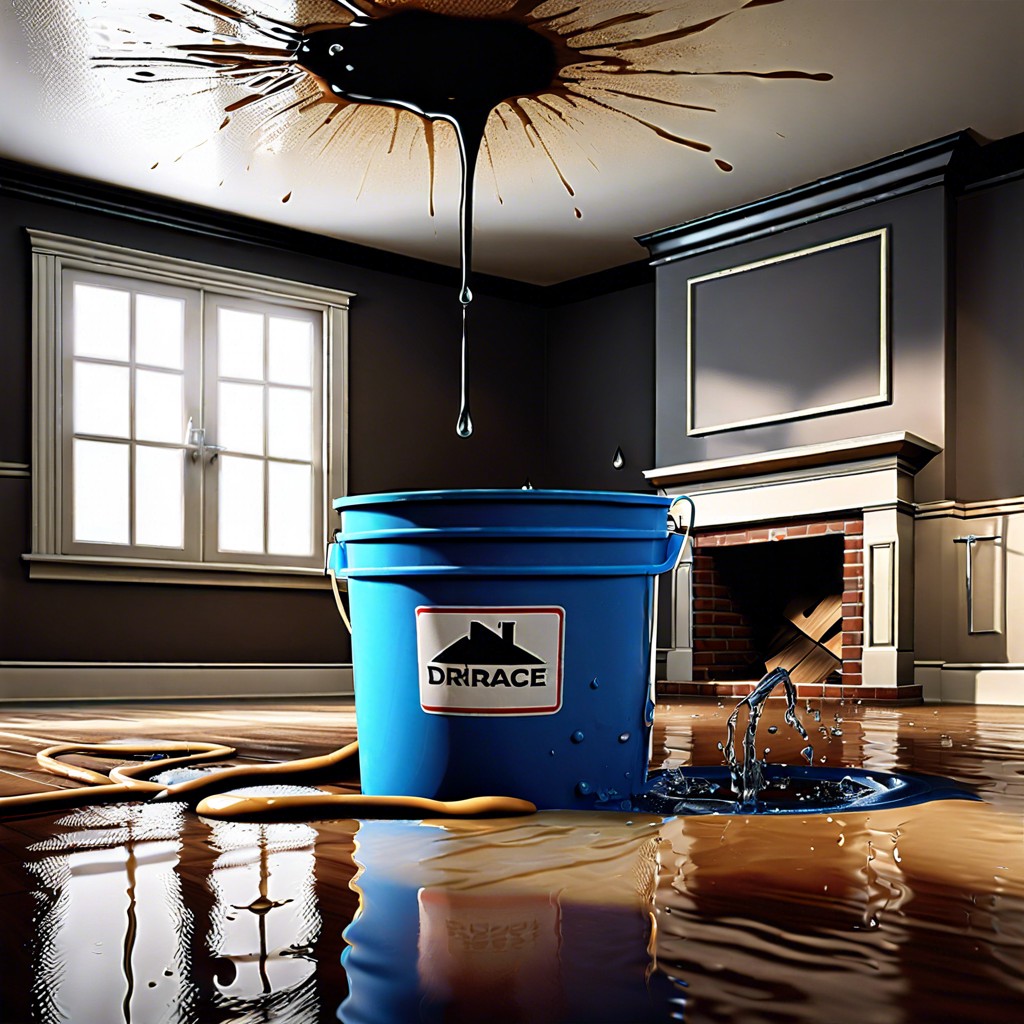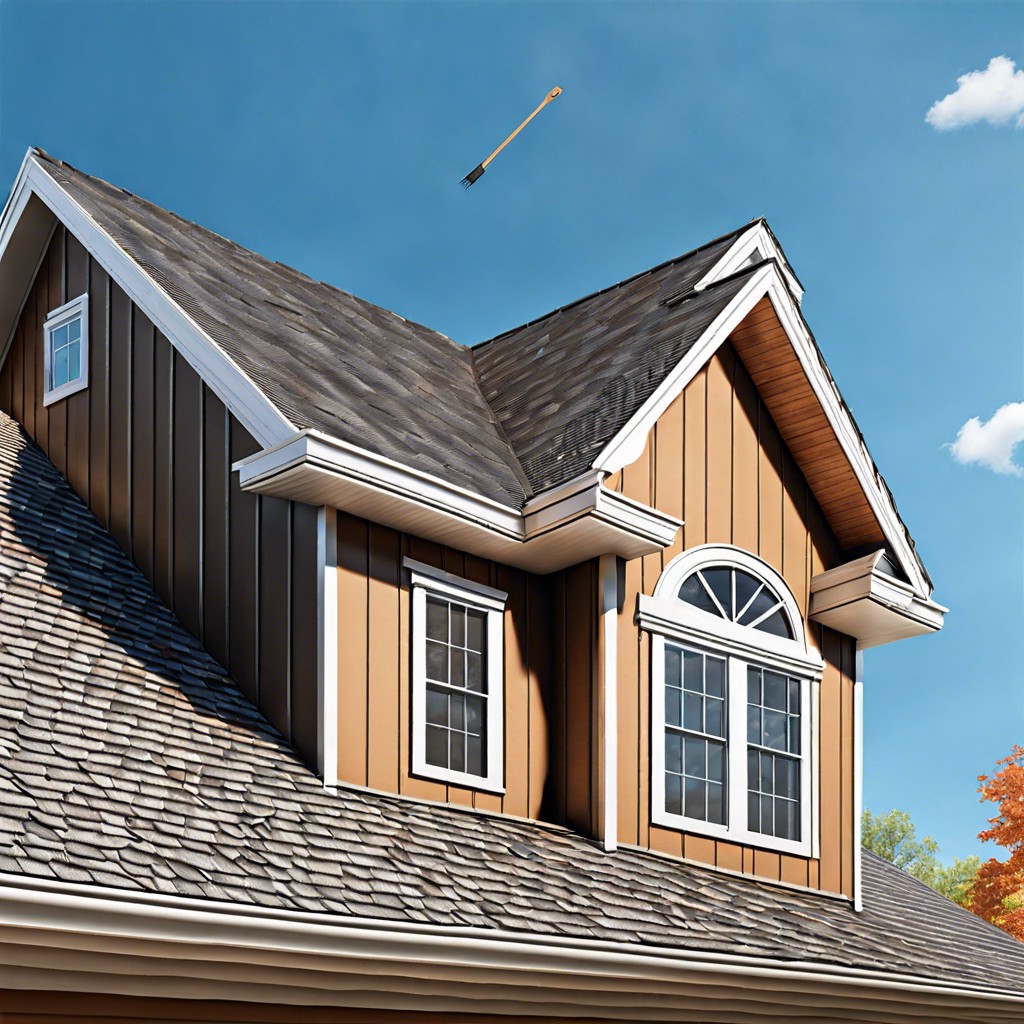Last updated on
Learn how to quickly identify the common causes of roof leaks and the steps you can take to effectively fix them.
Key takeaways:
- Water stains on ceiling indicate roof leak.
- Damaged shingles allow water infiltration.
- Moss or algae growth can lead to leaks.
- Water trails or spots in attic signal roof leak.
- Monitor vent boots and flashings for potential leaks.
Understanding the Signs of Roof Leaks

Water stains on your ceiling are telltale indicators of a roof leak. They usually appear as discolored rings or patches on your ceiling and, in severe cases, may present as dripping water during a rainstorm.
Damaged shingles can often be seen from the ground level. Look for missing, cracked, or curled shingles that suggest a breach in your roof’s first line of defense against rainwater. Additionally, an excessive amount of granules in your gutters or downspouts is a sign of wear that could lead to leaks.
Moss or algae growth on roof surfaces also hint at potential leak points. These can trap moisture against the roofing material, increasing the risk of water infiltration over time.
Evidence of water trails or spots in your attic after rain, specifically on the underside of the roof or on the rafters, can be a clear signal that water is leaking through your roof.
It’s important to monitor the condition of vent boots, flashings around chimneys, and other roof penetrations since these areas are particularly susceptible to leaks due to failed seals or weathering.
Water Stains On Your Ceiling
Water stains typically present as brownish, circular marks on your ceiling, often ringed by a darker border. Their appearance can signal a slow, persistent leak that has had time to seep through your roof and into your home. The size and spread of the stain can give clues about the leak’s magnitude. Small, isolated stains might suggest a minor puncture, while larger, more diffuse markings could point towards a more serious issue, such as widespread shingle damage or a compromised flashing. It’s important to address these signs promptly, as ongoing exposure to moisture can weaken the structure of your home and lead to mold growth.
Damaged Shingles
Shingle damage can come in various forms, such as curling, cracking, or even missing pieces. These defects can enable water to seep into the underlying layers of the roof and eventually into your home. Exposure to severe weather conditions and gradual wear are common culprits behind such damage.
To assess the situation, inspect your roof for any obvious signs of distress. Shingles that have lost their granules—a coating meant to protect against sun and rain—may appear bald and are an indicator that your roof’s integrity may be compromised.
Repair involves removing the damaged shingle and replacing it with a new one. For a temporary fix, roofing cement can be applied under the compromised shingle to seal any gaps. However, this is only a stopgap solution. For extensive damage, comprehensive measures such as a full roof replacement may be necessary.
Remember that working on a roof poses risks and proper safety equipment should always be used. If the damage is extensive or you’re unsure of the process, it’s best to contact a roofing professional.
Immediate Actions for Roof Leaks
If water is dripping or flowing into your home during a storm, finding a way to collect it is crucial to prevent further interior damage. Place a bucket or container under leaks to catch dripping water, ensuring you don’t compromise your flooring or furniture. Additionally, if it’s safe to do so, use towels or rags to soak up any standing water to avoid slips and damage to nearby items.
Once you’ve controlled the indoor situation, consider applying a tarp to the affected roof area. This will provide temporary protection against water infiltration and can help minimize damage until repairs can be made. Make sure the tarp extends over the ridge of the roof and is securely fastened to withstand wind and additional precipitation.
Remember, these actions are temporary fixes. Ultimately, proper assessment and repair of the roof leak by a professional should follow promptly.
Catch the Water With a Container
As soon as you notice a drip or any water entering your home, it’s crucial to minimize potential water damage. Place a bucket or any large container under the site of the drip to catch the water. Ensure the container is large enough to collect any runoff, and remember to empty it regularly to prevent overflow.
In addition to using a container, lay down towels or plastic sheeting on the floor to protect your flooring from water damage. Check the container periodically, especially after heavy rainfall, to avoid spills. Be mindful of the potential for the container to become heavy; if you’re using a large one, it may require assistance to empty.
Remember that catching the water is a temporary fix. It’s essential to address the leak at its source to prevent further damage and to ensure the integrity of your roof. Keep an eye on the amount and frequency of water being collected, as this can provide useful information for the repair process.




